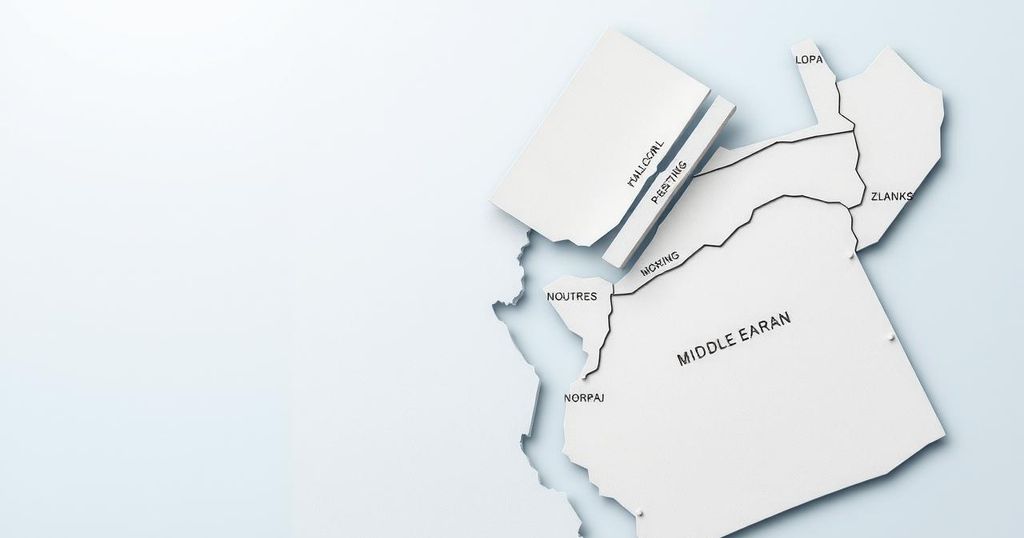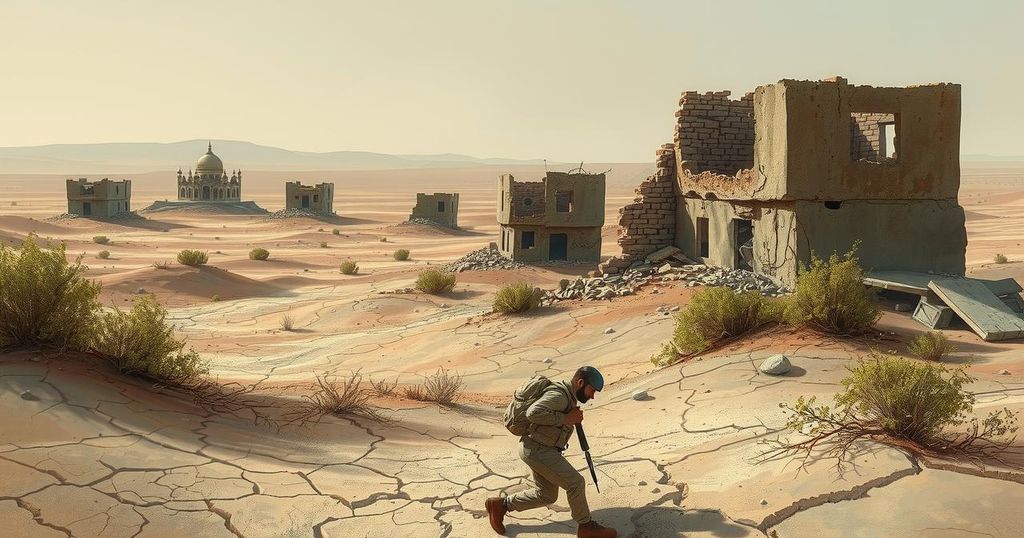A Syrian crackdown on Hezbollah cells reveals escalating tensions with Iran as reports criticize Iranian influence through proxy forces. The Syrian Ministry of Interior’s actions highlight ongoing security issues, exacerbated by Hezbollah’s involvement in military operations and illicit cross-border activities. Iran’s historical military engagement and support for Assad’s regime intensifies scrutiny of its role in Syrian stability.
On March 28, 2025, the Syrian newspaper Thawra reported on a significant security operation initiated by the Syrian Ministry of Interior to target Hezbollah cells in Sayyidah Zainab, near Damascus. This operation, confirmed by the Rural Damascus Security Directorate via their social media on March 27, resulted in the arrest of several individuals accused of planning disruptive activities in the region. Images released by local media depicted security forces apprehending three suspects during the crackdown.
The situation has amplified tensions between the Iranian regime and Syrian authorities, with the Syrian Ministry of Defense recently accusing Hezbollah militants of invading Syrian soil, resulting in fatalities of three Syrian soldiers from the emerging army. This incident has drawn attention to Tehran’s persistent influence in Syria, especially following the civil conflict that erupted in 2011.
Thawra further reveals that Iran has employed a dual strategy of direct military engagement along with leveraging proxy forces, notably Hezbollah, to secure its interests in Syria over the years. Hezbollah’s involvement in critical operations, such as the 2013 Qusayr offensive, demonstrates this approach, alongside support from the Quds Force of the IRGC under the late Qassem Soleimani, which has provided essential backing to Assad’s regime through military assistance and intelligence.
The analysis also underscores that Iranian intervention in Syria is extensive, with IRGC forces actively engaged since the onset of the conflict—reportedly suffering heavy casualties of over 2,100 fighters by March 2017. Additionally, Thawra accuses Iran of facilitating the Assad regime’s use of chemical weapons, particularly during the notorious Ghouta attacks in 2013 that resulted in significant civilian casualties. Such actions have occurred with support from both Russia and Hezbollah.
The critical border between Syria and Lebanon has emerged as a primary avenue for Hezbollah’s illicit operations, including arms smuggling and drug trafficking, often conducted in coordination with Iranian entities. In recent months, there has been a reported increase in conflict associated with Hezbollah’s cross-border activities.
In conclusion, the Thawra report indicates that Iranian interference in Syria—whether through direct military presence or the actions of proxy forces like Hezbollah—continues to be a pivotal matter impacting regional stability. The recent crackdown on Hezbollah cells in Sayyidah Zainab highlights persisting tensions between Tehran and Damascus regarding the level of Iranian control and influence in the area. Iran has mobilized various forces, including the Zeynabiyoun and Fatemiyoun brigades, under the guise of protecting holy sites, although the new Syrian government has now assumed responsibility for their security.
In summary, the Iranian government’s growing involvement in Syria, particularly through the actions of Hezbollah and IRGC forces, poses significant challenges to regional stability. The recent security operation in Sayyidah Zainab reveals the Syrian authorities’ concerns regarding Iranian influence, underlining the complex dynamics within the nation. As Iran continues to exert its presence through military and proxy actions, the implications for both Syria and neighboring states remain critical and concerning.
Original Source: www.ncr-iran.org




